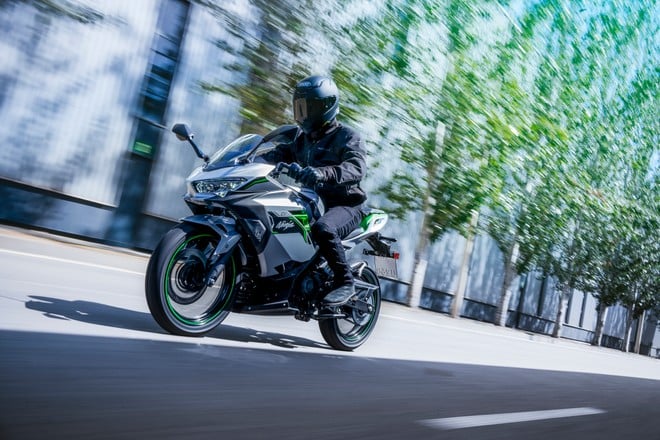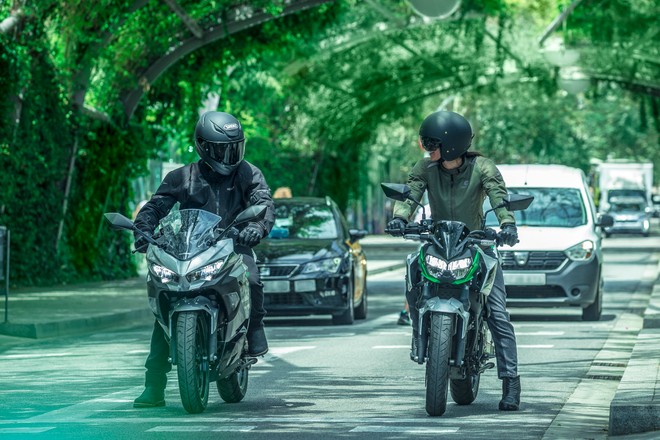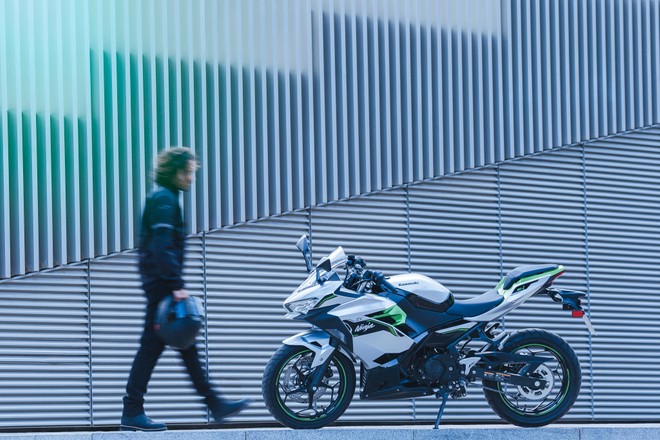
After the EICMA 2022 preview, Kawasaki officially launched its first two motorcycles electric. Let's talk about the Ninja e-1 and Z e-1 models. The Japanese manufacturer demonstrates that it has adopted a prudent approach to electric vehicles, focusing on models designed predominantly for the urban environment. Prices are not yet known.
FOR THE CITY? 

Kawasaki has been working on its first electric motorcycles for a long time. The specifications of the two battery-powered models are not, however, a surprise given that in August the approval documents for the Australian market appeared in which various details were present.
The new electric Kawasaki Ninja e-1 and Z e-1 are part of the Ninja and Z family. The frame is strictly derived from that of the Ninja and Z 400. The look of the electric models also reflects that of the Japanese brand's endothermic motorbikes. Therefore, for both models we find a steel trellis frame, a 41 mm fork and a gas-filled rear shock absorber with spring preload adjustment.
The braking system is composed of 290 mm and 220 mm discs with double-piston caliper. Since these are electric models, it is Regenerative braking is also present. The new electric Kawasakis use 100/80 front and 130/70 rear tires. Weight, respectively, 140 kg and 135 kg.
Available in two versions, Metallic Bright Silver and Metallic Matte Lime Green, they are equipped with 4 TFT displays, 3 incheswith connectivity smartphone.
ENGINE AND RANGE 

Both models have the same powertrain. The electric motor is capable of delivering 9 kW peak (5 kW continuous power) and 40.5 Nm of torque. Peak power can be adjusted. obtain for 15 seconds using the e-Boost functionactivated on the right knob. However, the mode Eco and Road driving. Instead, to facilitate maneuvering in narrow spaces, the motorbikes have the functionality Walk. Particularly useful for parking in tight spaces or climbing slopes, the mode Walk is set to a maximum of 5 km/h.
The engine is powered by two removable 50.4 V and 30 Ah batteries (approximately 1.5 kWh) weighing 11.5 kg each. From a normal socket, each battery can be be recharged in 3.7 hours. Charging can be carried out through the use of a docking station in which it is It is possible to insert the batteries, or via cable, with a socket under the saddle, without moving the batteries.
Speaking of performance, depending on the mode chosen driving speed, the speed maximum reaches up to 99 km/h (limited speed). Autonomy? The Japanese manufacturer speaks of 72 km, further demonstrating that these are models designed only for urban use.
Price and performance at the top? Xiaomi 13, buy it at the best price from eBay at 639 euros.